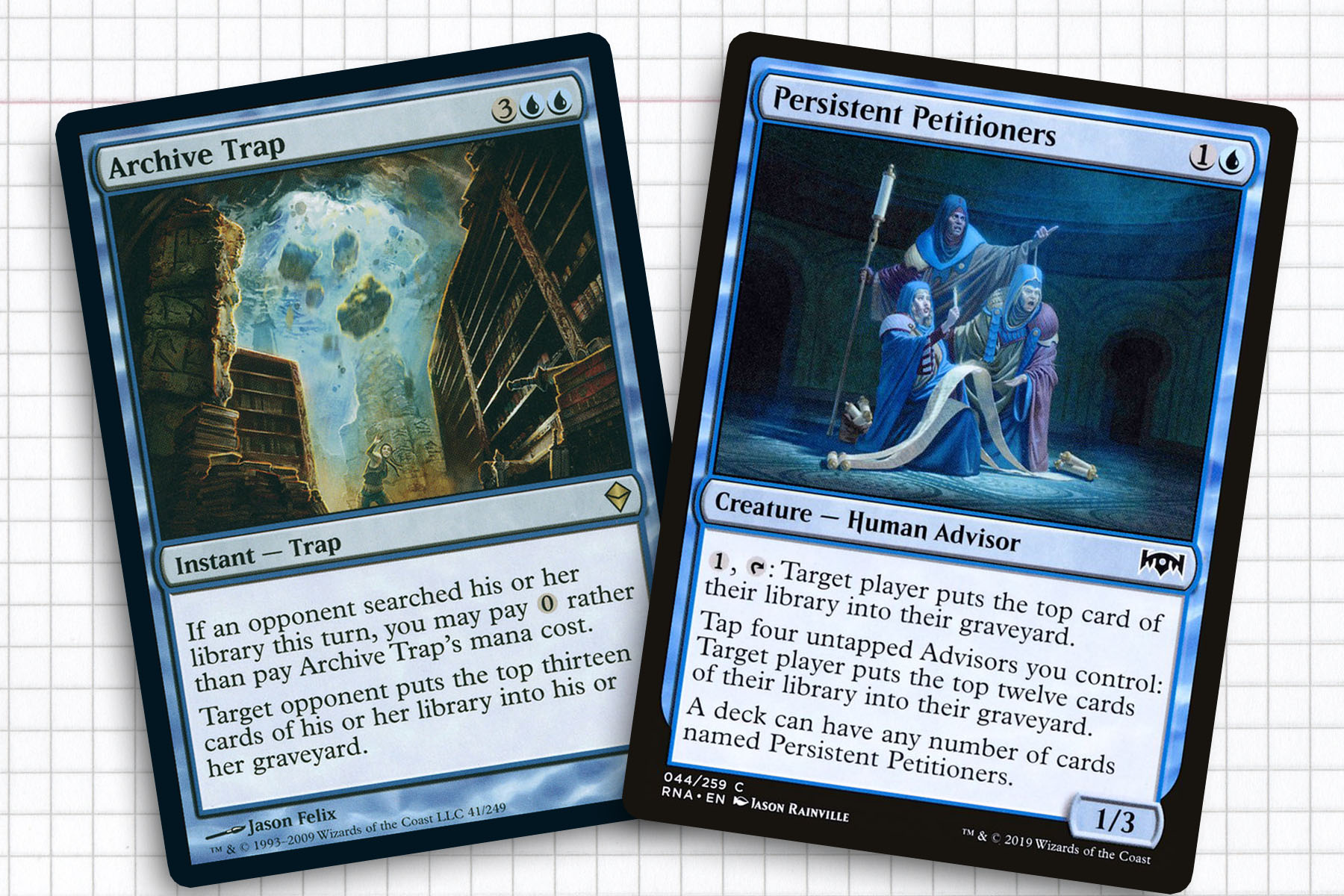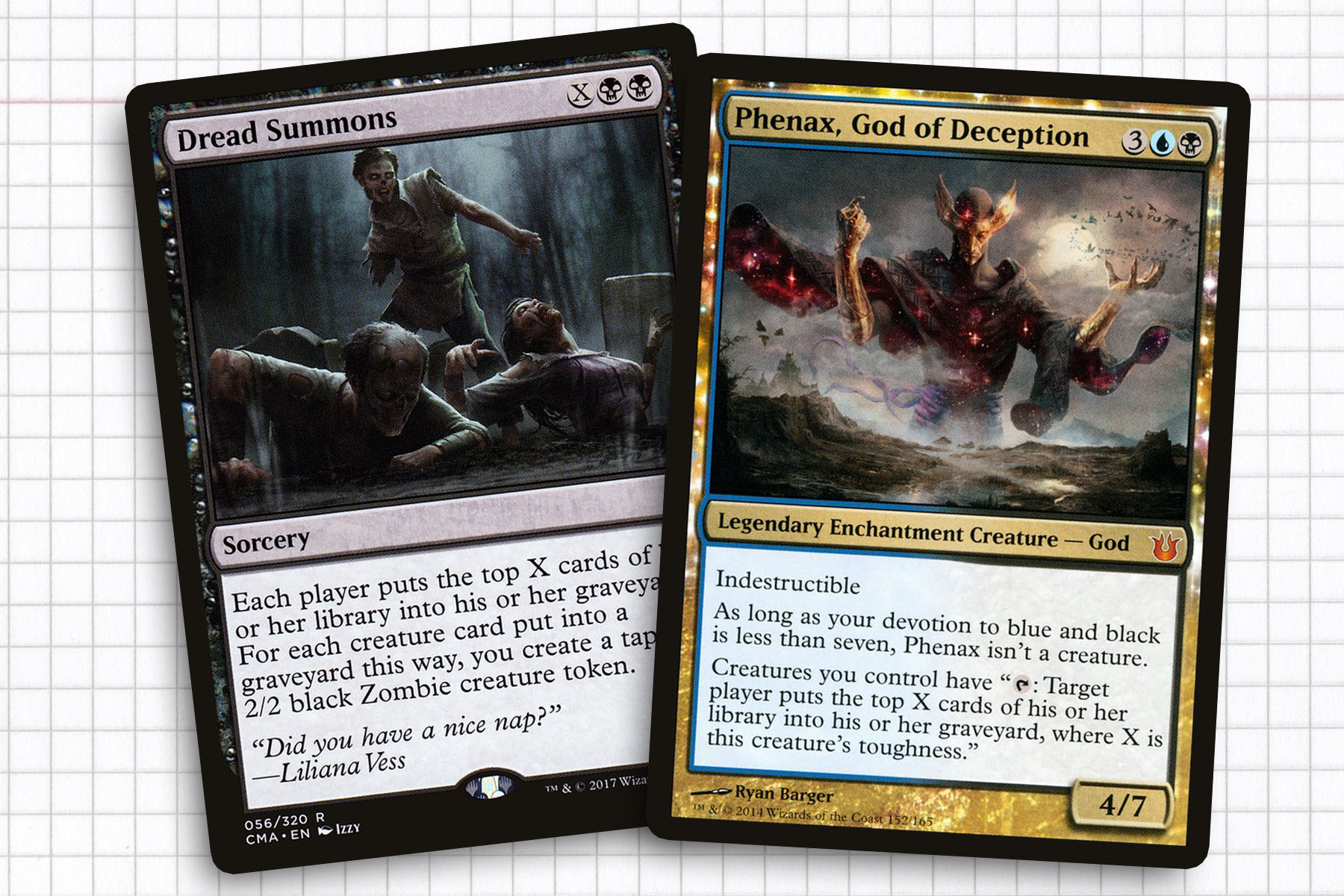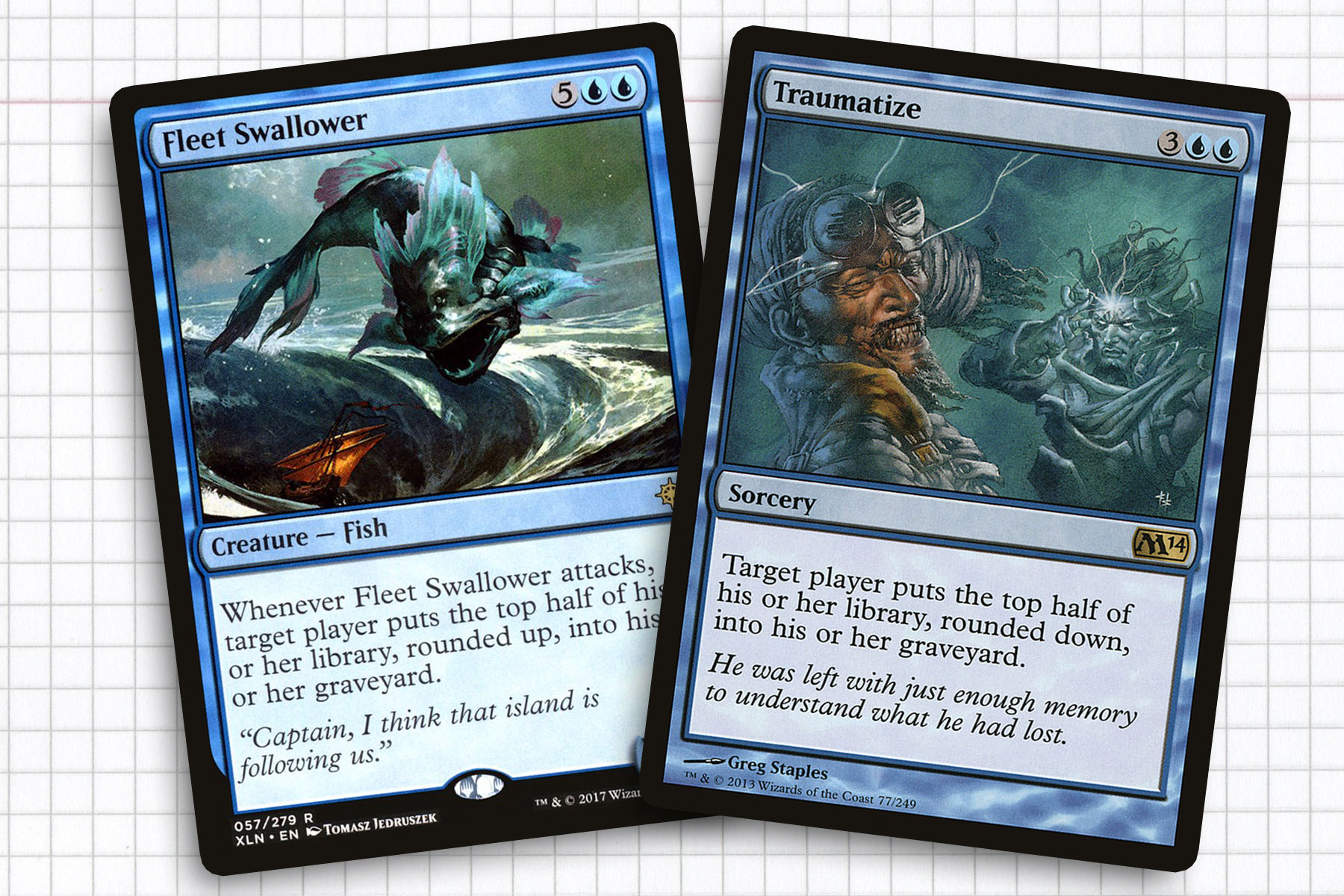I have a long history with Mill decks. My introduction came during Magic 2010 Limited, where Tome Scour was my highest-picked card of the set. It was the first Standard-legal deck I built, and I’ve never lost my passion for the archetype. And yet, I’ve never been able to find a place for it in Commander, at least not as the main win condition.
The Mill archetype has been held back in Commander by a couple big factors: the decks have more cards to mill from each opposing deck, and the games are rarely as long as you’d like them to be. This has made “decking the table” hard to do: you need to realistically be able to mill out everybody in ten turns. The Jumpstart legend Bruvac the Grandiloquent looks to speed up that process, making this a good time to reevaluate the mill archetype now that a dedicated general exists.
Time will tell whether Bruvac is more viable in a mono-blue deck versus what decks including him in the 99. I will start by looking at a couple pet cards to see how they are improved to scale into Commander. Then look at the branching effects of Bruvac the Grandiloquent and how it just might make the mill archetype viable in Commander. Finally, I will give my thesis as to what kind of deck I personally foresee Bruvac making the most impact.

Single Card Examinations
Archive Trap and Hedron Crab will always be linked together for me, both coming out of Zendikar and cementing their legacies in the mill deck I had built for early Worldwake Standard. For Commander, I’d love to say that Archive Trap could find a place in a deck sporting Bruvac, but I wholeheartedly believe that the impulse to use it early in the game off an early fetchland would outweigh waiting until Bruvac hit play a few turns later. Additionally, as much was as I would love for Hedron Crab to finally be viable in Commander, I don’t believe the persistent milling trigger off of landfall would do a mill deck any good when two toughness means the crab is a casualty of something as simple as Pyroclasm.
What I do believe might finally be plausible is a Persistent Petitioners deck with Bruvac the Grandiloquent at the helm. The archetype has had to overcome the fact that it is very hard to envision a situation where you can mill over 250 cards uncontested. With the setup of mana rocks and Thrumming Stone, I could imagine flooding the table with Petitioners to start milling in chunks of twenty-four. All to say, I think this strategy will scale up for Commander if it already hasn’t started infesting local metagames.

Scaling Up
Single card interactions are not going to be enough to judge the impact of Bruvac the Grandiloquent, so we turn our attention to suites of cards that all interact in similar ways. I find myself again echoing the words of Neale Talbot and his Seven by Nine theory, even if we’re not intending on building a singular deck this week. The idea is that in a 100-card format, the math to simulate having “four-of” a card results in you running seven cards of the same functionality. Nine slots of seven cards is 63 cards, which leaves room for an appropriate number of lands.
Let’s start with three spells I’ve often had on the short list as role players, but never perform well enough to make it past the first few revisions when considered for mill decks. Fascination has always been valuable for Nekusar, the Mindrazer, but now the mill option could be viable. Since Bruvac does not cause us to mill at the same rate as the rest of the table, suddenly we escalate our strategy, as every mana invested into X represents two cards for our opponents. Improving upon Fascination, we have Dread Summons, which not only mills the table, but will also give us the army we need to survive. And finally, Shared Trauma is an awkwardly designed and forgotten card, made to fill out a cycle. I’ve never cast it and had another player pay into without being a graveyard deck themselves. But recontextualized, I see it becoming a third Exsanguinate for a mill deck, when combined with the previous two cards.
While on the topic of mill effects that have flexibility in their uses, some black and Dimir cards come to mind. Lich Lord of Unx and Geth, Lord of the Vault are two options that will spiral out of control in an instant, especially in tandem with Undead Alchemist. Phenax, God of Deception and Glimpse the Unthinkable loosely fit into this theme, enough to at least give us a functional seven card suite. They don’t represent the same scalable ceiling, but at least do a lot of the mana investment.

Set It, Don’t Forget It
It would not be a stretch to say that Commander is a format where you absolutely want to get the maximum benefit for the least amount of mana. Because of my hypothetical ten turns to mill everyone out, we’d need to be around thirteen cards from every other player’s deck from turn three onward. So permanents that you can put on to the battlefield and just let them mill on consistent chunks are going to be crucial. These cards are not going to win the game for us, but will be the support we need from game to game.
Altar of the Brood was already a strong card, but with Bruvac the power level gets revitalized to the point where a turn one Altar could very well mean that you are going to mill upwards of thirty cards from each of your opponents deck on its own. Additionally, when Bruvac and Mesmeric Orb meet, the proportionate parts of the artifact’s intended use are completely inverted. And by comparison, the Altar starts to feel fair.
Filling out the remainder of our support suite, we want cards that might not be as powerful, but will at least supply incidental milling. Memory Erosion is an often overlooked card, many would probably rather have Sphinx’s Tutelage; but I worry that a dedicated mill isn’t going to pack the level of draw spells required to make it shine. Additionally, we punish players who cast a lot of spells.
Mindcrank, in my estimation, might be a hidden gem for this newly developing archetype, especially if Nekusar, the Mindrazer can become a hybrid strategy. Since so many players still win through some form of damage, this may quickly weaponize that damage and leave our opponents with several different paths to elimination. Similarly, Fraying Sanity milling twice the amount of cards on the enchanted player means that even a smaller mill spell can spiral out of control. Lastly, there are the creatures, Dreamborn Muse will work just like Mesmeric Orb in our favor. And Nemesis of Reason isn’t a win condition on its own, but it certainly does a good impression of Ulamog, the Ceaseless Hunger.

New Win Conditions
Finally, let’s talk about cards that went from being pretty good to absolute win conditions for any mill deck. First off there is the duo of Traumatize and Fleet Swallower. Prior to Bruvac, these two created awkward situations where an opponent was required to account for their deck size before chopping it in half. Now, you’re just removing an entire deck. In a similar sense, I think that if we are working with self milling cards or just a high ratio of spell cards in general, then Psychic Spiral can itself be a powerful win condition to reach a similar goal as the previous examples. The upside in the case of Psychic Spiral being that we also give ourselves the ability to regrow any powerful effects we may have lost, even if it doesn’t mean we are ending the game in the immediate future.
After digging through all of these different mill cards, trying to understand how they have contextually changed we must turn to the final question: what will we be using Bruvac the Grandiloquent for? To me it’s pretty easy to say that he can support a mono blue mill deck on his own. Joining the 99 of another general, it’s easy to see him falling into The Mimeoplasm decks, but the general that personally calls out to me for Bruvac is is Lazav, Dimir Mastermind. Increasing the number of cards going to my opponents’ graveyards as early as turn three means that our general will find more options faster for creatures to become. While it might not be as exciting as planning a deck around solely winning through mill, the more interactive nature means that it will fit my style a bit more, while leaving the door open for mill as a Plan B.
Overall, I think that Bruvac has a lot of value being injected into Commander. I don’t think that he is so powerful as to be problematic or bannable. In fact, the day that a mill deck becomes the topic of conversation for bannings probably means that we have already broken Commander beyond repair. He’s seemingly in vogue right now, but in the long term I see Bruvac as a relatively safe card to have in the format. In fact, I would expect a few strong mill cards in the future to really allow him to shine.
I had a bit of an absence over the last few weeks, even if I disguised with some articles held in reserve. It’s really great to be back writing, though it feels a little strange to be doing it again. I don’t feel the need to get into why I was away; but in these trying times, I really hope that people are taking care of themselves and remembering to find things that they enjoy. Until next time, thank you for reading.
Ryan Sainio is a Graphic Designer who writes about EDH and the EDH community. He has been playing Magic: The Gathering since 7th Edition in 2002 and values flavorful and fun gameplay over competitively optimized decks.

